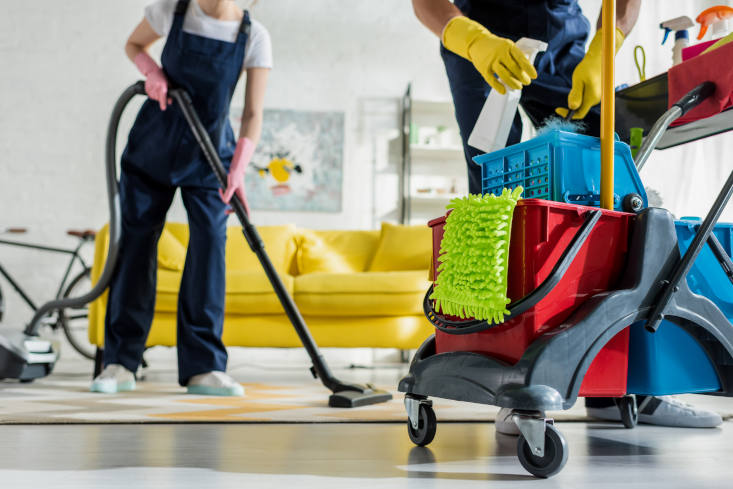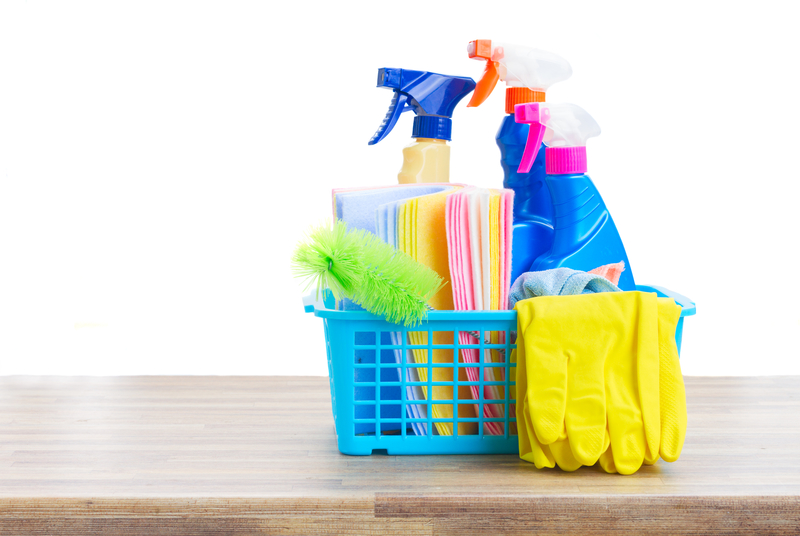Attain a Cleaner Home with These Everyday Cleaning Tips: Defrosted and Cleaned Every Few Months and Much more
Attain a Cleaner Home with These Everyday Cleaning Tips: Defrosted and Cleaned Every Few Months and Much more
Blog Article
Understanding the Demand for Thoroughly Decontaminating and Sterilizing Regularly Touched Surface Areas in High-Traffic Areas
In the realm of public health and wellness and safety and security, the careful disinfection and sanitization of often touched surface areas in high-traffic locations stand as paramount actions in avoiding the spread of hazardous virus. The relevance of this practice expands far past plain tidiness, diving right into the world of disease avoidance and neighborhood health. By checking out the different elements of surface disinfection, from the risks connected with neglecting cleaning protocols to the effective methods that can be utilized, a more clear understanding emerges of the essential duty these practices play in guarding public wellness. As we navigate this discussion, it ends up being noticeable that the implications of comprehensive surface area disinfection reverberate not only within the boundaries of a particular atmosphere but also resonate on a more comprehensive scale, impacting the wellness and safety and security of people throughout diverse common settings.
Significance of Surface Area Sanitation
Emphasizing the extensive disinfection of high-traffic surface areas is crucial in preserving a hygienic setting and preventing the spread of dangerous virus. High-touch surface areas such as door takes care of, light switches, elevator buttons, and counter tops work as breeding grounds for microorganisms and viruses. Normal disinfection of these surfaces is vital to lower the risk of contamination and transmission of illnesses.
By carrying out a robust sanitation protocol, institutions and services can produce a much safer setting for site visitors, customers, and workers. Correct surface area sanitation not only alleviates the spread of contagious diseases however likewise imparts self-confidence in the sanitation and safety of the facilities. This aggressive strategy demonstrates a commitment to health and wellness and health, which is specifically essential in high-traffic areas where the likelihood of exposure to pathogens is heightened.
Furthermore, surface disinfection plays a critical duty in overall infection control techniques. Integrated with hand health techniques, wearing masks, and keeping physical distancing, comprehensive sanitation of high-touch surfaces develops a detailed protection versus the transmission of unsafe microbes. Prioritizing surface sanitation is a vital component of a holistic approach to health and wellness in shared areas.
Dangers of Disregarding Cleansing Practices
Overlooking detailed disinfection of high-traffic surface areas dramatically increases the danger of viral and bacterial contamination, positioning a significant risk to the health and wellness and safety and security of individuals often visiting these rooms. Failing to implement correct cleansing practices can lead to the build-up and spread of dangerous microorganisms, consisting of bacteria and viruses, on regularly touched surface areas such as doorknobs, handrails, lift buttons, and countertops.

Furthermore, overlooking the significance of extensive cleaning not only compromises the wellness of individuals yet additionally undermines initiatives to preserve a tidy and hygienic environment. It is important to acknowledge the importance of appropriate disinfection methods in stopping the spread of infections and securing public health.
Efficient Sanitation Methods
To preserve optimum cleanliness and lower the danger of contamination on high-traffic surfaces, utilizing reliable sanitation techniques is crucial. One my response of the most usual and effective disinfection approaches is using chemical anti-bacterials.
Another efficient technique is using UV-C light. UV-C light has actually been revealed to be effective in killing a large variety of microbes by disrupting their DNA framework, hence stopping them from reproducing. However, it is crucial to use UV-C light correctly, ensuring that the right strength and direct exposure time are applied to achieve the preferred sanitation outcomes.
Additionally, employing heavy steam cleansing as a sanitation technique can be highly efficient, especially on surfaces that are heat-resistant. Vapor can permeate permeable surface areas and eliminate bacteria, viruses, and other pathogens properly. When using heavy steam cleaning, it is important to make certain that the surface area reaches the required temperature for an adequate amount of time to assure proper sanitation.
Influence on Public Wellness
The upkeep of high criteria of cleanliness and disinfection on high-traffic surfaces plays an important function in guarding public health and wellness. Often touched surfaces in locations with high tramp, such as doorknobs, handrails, lift switches, and washroom centers, act as reproducing premises for hazardous pathogens. Failing to appropriately decontaminate these surfaces can cause the rapid spread of contagious diseases within areas. By carrying out thorough sanitation protocols, the danger of transmission of viruses, bacteria, and various other germs can be substantially reduced.
Efficient cleanliness methods not just secure individuals from dropping sick but likewise contribute to the general well-being of culture. Public health authorities emphasize the value of maintaining tidy settings to stop break outs and have the spread of diseases. In high-traffic locations like airport terminals, institutions, medical facilities, and public transportation systems, the influence of strenuous home disinfection actions can not be downplayed. Prioritizing the sanitization of often touched surfaces is a positive approach to advertising public wellness and boosting the safety and security of people in shared areas.
Implementing Normal Cleaning Up Procedures
Immediately setting up and sticking to a regular schedule of cleaning methods is paramount for keeping the sanitation and safety and security of high-traffic surface areas. Regular cleaning methods are crucial in preventing the buildup of germs and virus on often touched surface areas, especially in areas with high foot website traffic. By carrying out a systematic strategy to cleaning, organizations can properly minimize the threat of illness transmission and develop a much healthier atmosphere for employees, clients, and the general public.
To develop a reliable cleansing timetable, it is crucial to determine high-traffic areas that require constant interest. These areas may consist of doorknobs, hand rails, lift buttons, bathroom centers, and shared devices. Executing a regular cleansing routine that targets these surface areas multiple times a day can significantly reduce the spread of damaging microorganisms and viruses.
In addition, making use of ideal cleaner and anti-bacterials is vital to making certain that surfaces are extensively sanitized. Normal training of cleaning team on correct cleaning methods and the significance of adherence to the cleansing schedule is likewise vital in maintaining a sanitary atmosphere. By prioritizing constant cleansing protocols, companies can promote the health and wellness and well-being of people that engage with these high-traffic surfaces.

Conclusion
To conclude, it is vital to prioritize extensive sanitation and sanitization of often touched surface areas in high-traffic locations to avoid the spread of unsafe microorganisms and keep public wellness. Overlooking correct cleansing methods can increase the danger of contamination and transmission of illness. By executing normal cleansing procedures and utilizing effective disinfection methods, we can develop web link a much safer setting for every person (defrosted and cleaned every few months). It is necessary to recognize the importance of preserving clean surface areas in high-traffic areas to ensure the well-being of the community.
In the world of public health and safety, the meticulous sanitation and sanitization of frequently touched surface areas in high-traffic areas stand as extremely important procedures in protecting against the spread of damaging pathogens. By exploring the numerous facets of surface disinfection, from the risks connected with overlooking cleaning methods to the reliable approaches that can be employed, a clearer understanding emerges of the important function these methods play in securing public health.Additionally, utilizing steam cleansing as a sanitation approach can be extremely efficient, specifically on surface areas that are heat-resistant. When using steam cleansing, it is essential to make sure that the surface reaches the needed temperature level for an enough amount of time to guarantee correct sanitation.
In final thought, it is important to focus on thorough disinfection and sanitization of regularly touched surface areas in high-traffic areas to avoid the spread of unsafe pathogens and maintain public health and wellness.
Report this page